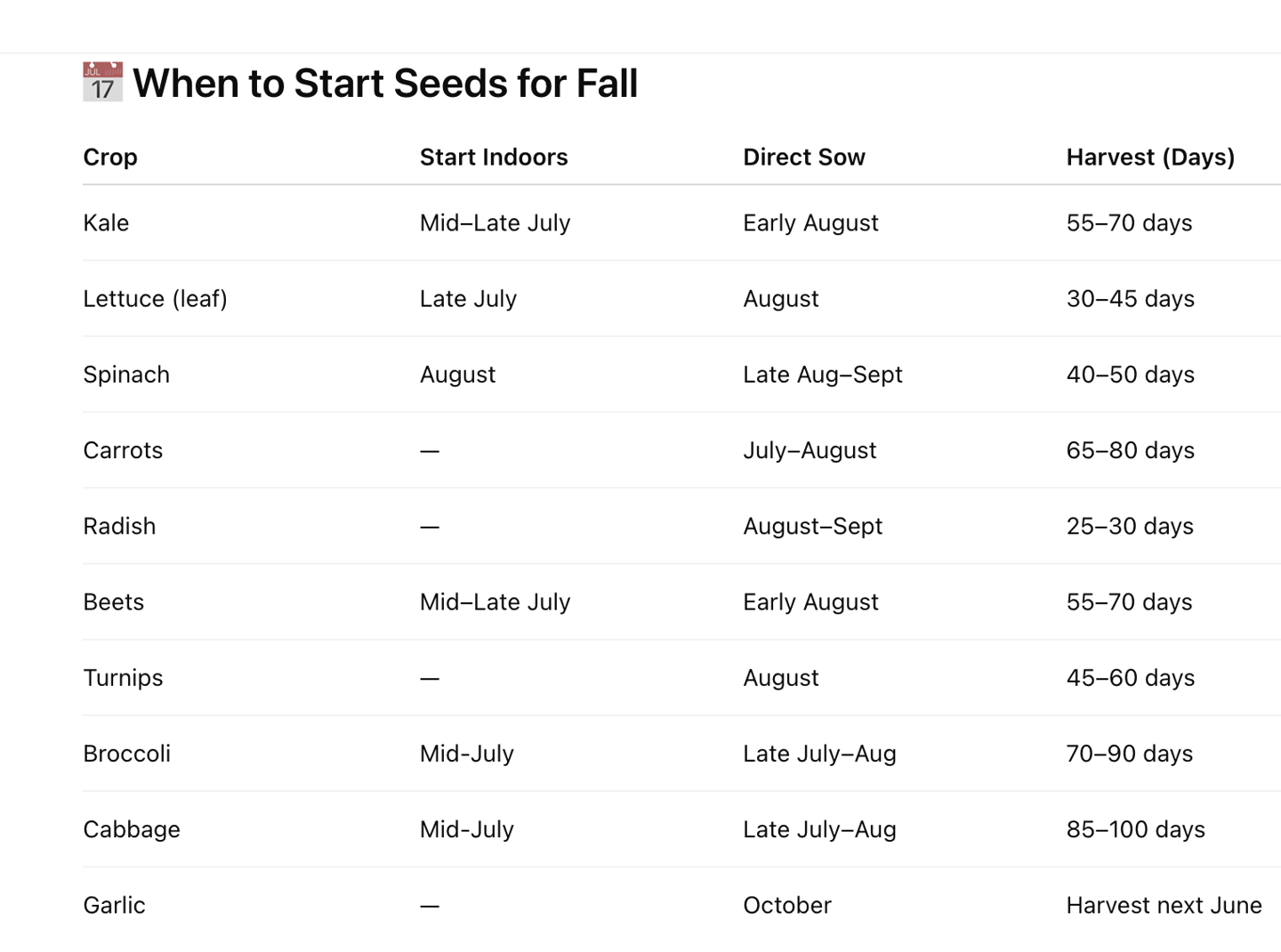How to Prepare, Plant, and Prosper This Autumn
Think gardening season is over? Think again! In Northern Virginia, fall is the perfect time for a second harvest. With cooler temps, fewer pests, and sweeter greens, it’s the ideal season to grow. Whether you're using raised beds, containers, or a GreenStalk vertical garden, this detailed guide covers everything you need—from prepping your soil to planting timelines and harvest tips—for a thriving fall garden. Blog post description.
7/26/20253 min read


Fall Gardening in Northern Virginia: How to Prepare, Plant, and Prosper This Autumn
Fall may feel like the end of the growing season, but in Northern Virginia, it’s actually a second chance to reap a bountiful harvest. Cooler temperatures mean fewer pests, better-tasting greens, and the perfect time to reset your soil for long-term success. Whether you're working with raised beds, containers, or vertical planters like GreenStalks, this guide will walk you through everything you need to know to garden successfully this fall.
Why Garden in the Fall?
Cooler temperatures = less plant stress
Fewer pests (goodbye, squash bugs and aphids!)
Tastier greens: Kale, spinach, and carrots sweeten after a frost
Soil building: Great time to amend beds with compost for spring
Step 1: Preparing Your Fall Garden
1. Clear Out Summer Debris
Remove plants that are diseased, overgrown, or no longer productive. Compost healthy plant matter and dispose of anything that showed signs of blight, mildew, or pest infestations.
2. Test and Amend Your Soil
Northern Virginia soil can be clay-heavy. Do a soil test and amend accordingly:
Compost: Add to improve structure and nutrient availability
Organic fertilizer: Look for a balanced or nitrogen-rich blend (especially for leafy greens)
Worm castings or composted manure: Boost microbial life for healthy soil
3. Prep Beds, Containers & Towers
Raised Beds: Loosen soil with a fork, mix in compost, remove roots
Containers: Dump, mix, and refresh potting mix; add slow-release fertilizer
GreenStalk Vertical Planters: Remove spent roots, flush layers with compost tea, and replant each tier with cool-weather crops
When to Start Seeds for Fall
➡️ Tip: Use a fall planting calculator to count back from your first frost date (typically mid-October in Northern Virginia) and add 7–14 days to account for shorter fall daylight.
How to Grow: Beds, Containers & Vertical Gardening
Raised Bed Gardening
Pros: Warmer soil, great drainage, easy to amend
Tip: Use floating row covers or low tunnels to extend the season into November
Plant suggestions: Kale, collards, carrots, garlic, broccoli, beets, arugula
Container Gardening
Pros: Flexibility, portability, good for patios/balconies
Tips: Use high-quality potting soil with good drainage. Water more frequently, as containers dry out quickly.
Ideal crops: Spinach, lettuce, radish, green onions, Swiss chard
Vertical Garden
Pros: Space-saving, great drainage, vertical airflow reduces disease
Tips: Plant herbs on top tiers, lettuces in the middle, root crops at the bottom. Use worm castings or liquid kelp weekly.
Cool-season combos:
Top: Cilantro, chives, thyme
Middle: Kale, mustard greens, arugula
Bottom: Radishes, carrots, beets
Fertilizing & Watering Tips for Fall
Use balanced or nitrogen-rich fertilizers for leafy crops (NPK 4-4-4 or 5-1-1)
Apply compost tea or fish emulsion every 2 weeks to boost microbial life
Water early in the day to reduce fungal risk, and mulch to retain soil warmth
Fall Garden Harvest Tips
Harvest early in the day when greens are crisp
Succession plant every 1–2 weeks for ongoing harvests (especially lettuce, radish, spinach)
Frost protection: Use row covers, mini hoops, or cloches as temperatures drop in October
Bonus: Companion Planting & Pest Control
Marigolds & nasturtiums still work wonders in early fall to deter pests
Plant garlic and onions to deter aphids and beetles
Spray neem or insecticidal soap early if aphids persist on brassicas
Final Thoughts
Fall gardening in Northern Virginia is a beautiful way to extend your harvest, build soil health, and enjoy cooler weather in the garden. Whether you’re tucking seeds into a garden bed, container, or vertical planter, the fall season is ripe with opportunity.
Start small, experiment with combinations, and enjoy the therapeutic rhythm of gardening as the seasons shift.
Quick Fall Garden Checklist
✅ Clear and amend soil
✅ Start seeds mid-July to early September
✅ Transplant by early September
✅ Mulch and water regularly
✅ Use frost protection in October
✅ Harvest continuously until first hard frost
✅ Plant garlic in October for spring harvest
Want More Tips?
Follow @ASKDolo x HealingInGarden on Instagram for:
Weekly fall gardening tips
Container garden ideas
DIY compost, tea blends, and seasonal recipes
Veteran-led wellness through gardening


Grow
Cultivating wellness through gardening and sustainability.
Email Us:
© 2025. Healing IN Garden & Farm LLC. All rights reserved.
Created by askdolo.com
